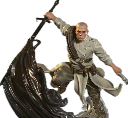The universe is bottle-necked at processor speed
 SzethFriendOfNimi @ SzethFriendOfNimi @lemmy.world Posts 5Comments 963Joined 2 yr. ago
SzethFriendOfNimi @ SzethFriendOfNimi @lemmy.world Posts 5Comments 963Joined 2 yr. ago

SzethFriendOfNimi @ SzethFriendOfNimi @lemmy.world
Posts
5
Comments
963
Joined
2 yr. ago
The Speed of Light is NOT About Light